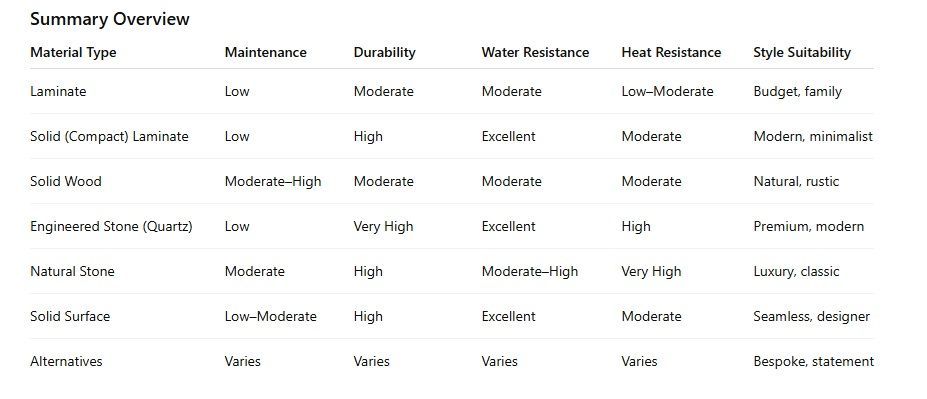Kitchen Worktops – A Complete Review
Choosing the right worktop is one of the biggest decisions in any kitchen project. It needs to look good, suit your lifestyle, and stand up to everyday use.
Here’s a guide to the main worktop materials available in the UK — what they’re made from, how they perform, and where each one works best.
Many are available in different thicknesses, which will affect both the look and the cost.
Laminate Worktops
(Also called standard or post-formed laminate)
What they are
A decorative printed surface (often mimicking stone or wood) bonded to a chipboard or MDF core and sealed with a protective overlay. Edges are usually rounded or sometimes square-edged for a more contemporary finish.
Pros
Huge variety of designs, colours, and finishes
Lightweight and straightforward to install
Low maintenance — simply wipe clean
Good everyday durability for the cost
Cons
Vulnerable to moisture damage at joints and cut-outs
Can scorch if hot pans are placed directly on the surface
Prone to chipping or peeling if knocked
Not ideal for undermount sinks
Verdict
A great option for cost-conscious projects or rental properties. Offers plenty of choice and a clean finish but less long-term resilience than higher-end materials.
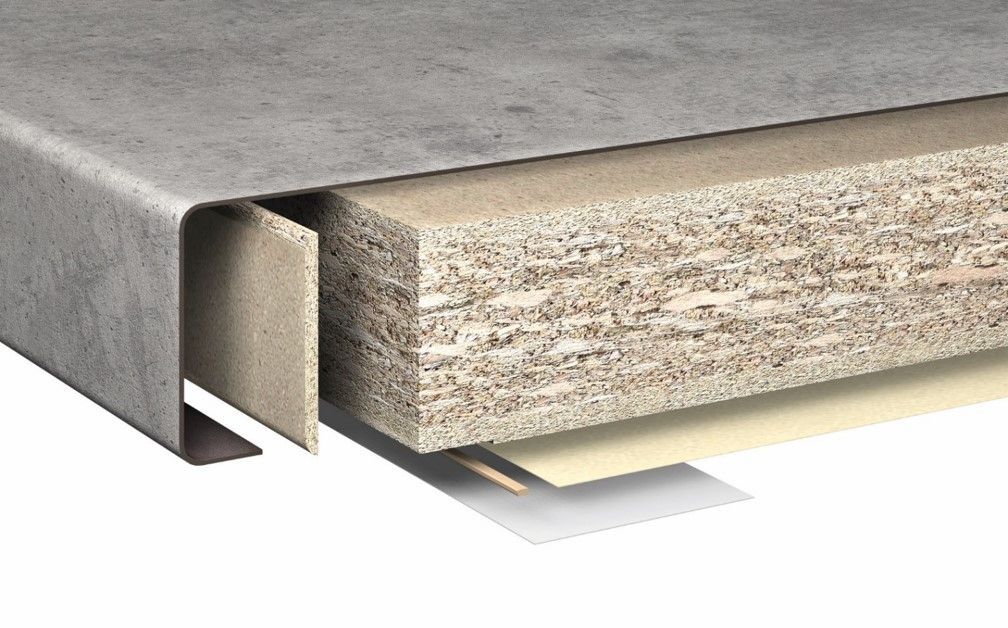
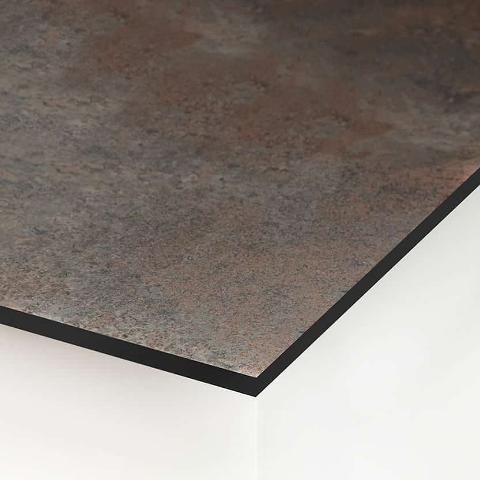
Solid (Compact) Laminate Worktops
(Sometimes called solid core or slimline laminate)
What they are
Made entirely from layers of resin-impregnated paper compressed under heat and pressure — with no chipboard or MDF core. Typically 12–20 mm thick, creating a sleek, modern profile.
Pros
Fully waterproof — suitable for undermount sinks and drainer grooves
Durable, non-porous and hygienic
Slim, contemporary look
Excellent alternative to stone or solid surface for modern designs
Cons
Requires specialist cutting and fitting tools
Limited options for shaped edges
Not immune to heat damage — trivets still recommended
Pattern depth less realistic than stone or quartz
Verdict
A strong mid-range choice combining style, practicality, and performance. Ideal if you want a clean, modern look with the reassurance of a waterproof surface.
Solid Wood Worktops
What they are
Worktops made from real timber such as oak, walnut, maple, or beech — either as a single board or “butcher block” style, with multiple pieces bonded together.
Pros
Warm, natural appearance that adds character
Can be sanded and refinished when worn
Ages gracefully, developing a patina over time
Suits both traditional and contemporary kitchens
Cons
Needs regular oiling and maintenance to stay sealed
Susceptible to water and heat damage if neglected
Can move slightly with humidity and temperature changes
Scratches and marks are common, though often add charm
Verdict
Beautiful and tactile, solid wood brings warmth and life to a kitchen. Best for homeowners who appreciate natural materials and don’t mind a little ongoing care.
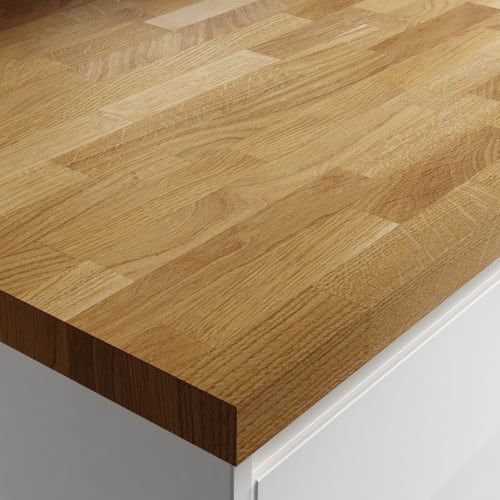

Engineered Stone (Quartz) Worktops
What they are
Man-made slabs of crushed quartz and resin, creating a non-porous, consistent, and durable surface. Available in a wide range of colours and patterns, often imitating marble or granite.
Pros
Highly durable, scratch- and stain-resistant
Non-porous and easy to maintain
Excellent consistency in colour and pattern
Delivers a premium look without the upkeep of natural stone
Cons
Heavy and requires professional templating and installation
Can be damaged by extreme heat — avoid direct contact with hot pans
Difficult to repair if chipped or cracked
Limited tolerance for structural movement in cabinetry
Verdict
A superb all-round option offering style, strength, and low maintenance. Ideal for busy households wanting a luxurious look with everyday practicality.
Natural Stone Worktops
(Granite, Marble, Soapstone and similar materials)
What they are
Cut from solid slabs of natural stone, each with unique veining and colour variations. Granite and marble are the most commonly used types in UK kitchens.
Pros
Beautiful, timeless appearance — each slab is unique
Very hard and durable, especially granite
Excellent heat resistance
Adds a sense of luxury and permanence
Cons
Requires sealing and some maintenance to protect against staining
Heavy and needs professional fitting
Marble can etch or mark from acidic foods
Natural variations mean joints may be more visible
Verdict
Perfect for design-led, high-end kitchens where the material itself is part of the statement. Demands careful installation and a little ongoing care but rewards with stunning, long-term beauty.
Verdict
Best suited to custom projects or feature areas such as islands or bars. Perfect for clients seeking a one-off look or statement material.
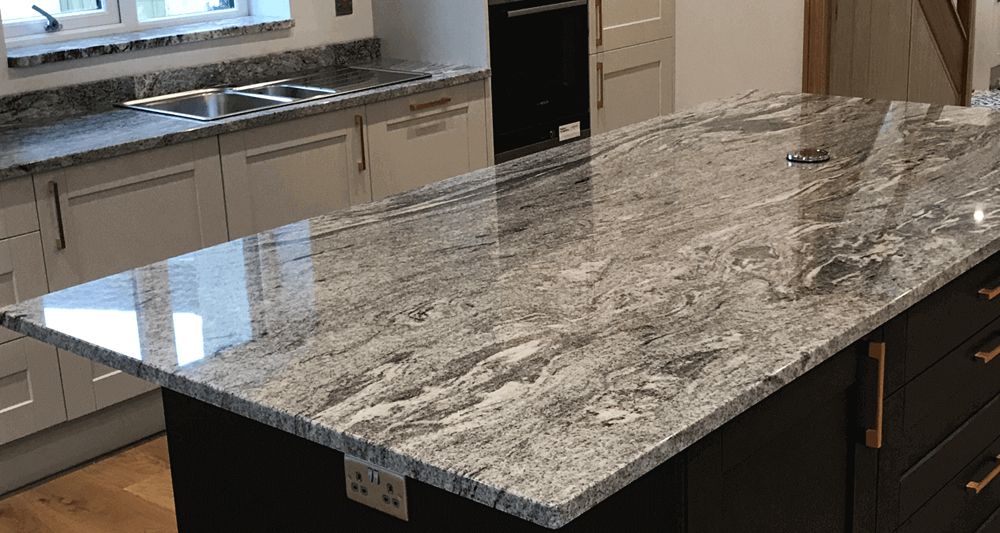

Solid Surface Worktops
(Acrylic or mineral composite, e.g. Corian, Hi-Macs, Minerva)
What they are
Man-made materials combining acrylic resins and mineral fillers to create a seamless, non-porous surface that can be moulded and joined invisibly.
Pros
Seamless appearance — joins can be almost invisible
Hygienic and easy to clean
Can integrate sinks and drainer grooves
Scratches and marks can often be repaired or polished out
Cons
Lower heat resistance than stone or quartz
Can scratch more easily if not cared for
Requires specialist fabrication and fitting
Doesn’t have the same “natural” feel as stone
Verdict
Excellent for sleek, contemporary kitchens or where a seamless look is important. Offers great flexibility in design and shape, with a smooth, modern finish.
Alternative Materials
(Concrete, stainless steel, recycled glass, terrazzo, and others)
What they are
Specialist materials offering distinctive appearances and textures — often used in bespoke or design-focused kitchens.
Pros
Unique and characterful
Can be highly durable depending on material
Adds individuality and texture to a scheme
Cons
Typically expensive and bespoke
Often need specialist installation and sealing
May require more maintenance or care

